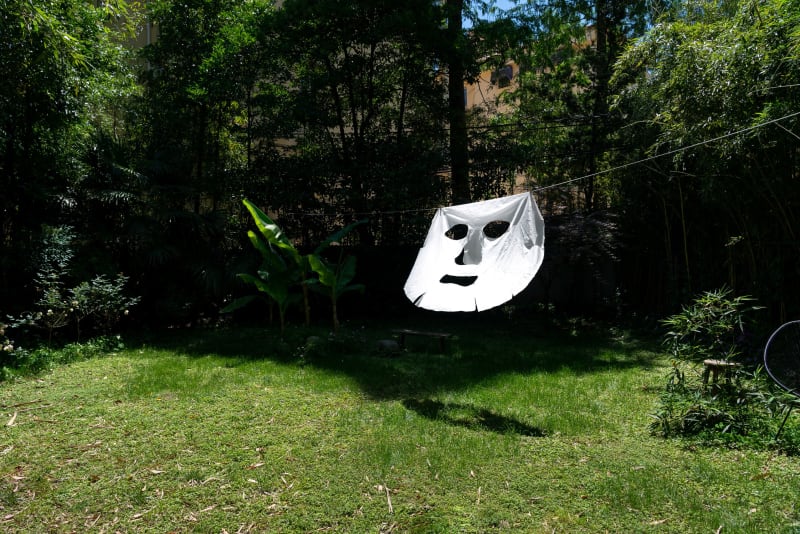A giant face mask hangs like a bedsheet in Capsule shanghai’s garden this early summer, with a light breeze, turning my initial silence and disbelief into a suggestive smile. It reminds me of a large advertisement in front of a shop in Korea during the COVID-19 pandemic, written in Chinese, "Please wear a face mask." Perhaps digital translations are yet to be smart enough to distinguish whether the mask refers to a medical face mask, skincare mask, or mask for disguise. Etymologically, the word "mask" comes from the Latin word, masca, to mean witch or ghost – which are the shared impressions of all three to people. Cai Zebin’s work approach does not necessarily depart from linguistics; however, his crossover appropriations from the history of art have provided him with inspirations, and to which, result in his responses.
"Imagination is the sum of all my visual experiences from reality" is the only phrase written among the 108 Drawings (all works mentioned in this are completed in 2019). This piece is comparable to a word in a dictionary that's defined by the rest. Cai Zebin uses painting to translate his experiences, impressions, criticism, and thoughts on the works of art he's interested in throughout art history. As such, the mask in Breeze #2 shares the same kind of lightness and enigma as Henri Rousseau’s The Wedding Party (1995), while the plants painted with exuberant colors, for instance, the swinging branches that look like a dancing companion, in a trance, there is the wind in front of one's eyes.
On Companion, at the gallery entrance, one finds the names of Henri Rousseau's two wives written on the color palette, which have become the synecdoche of love. In which, Cai Zebin seems to suggest that the figure consists of the object (palette) and people (two wives) in a surrealist style (Rene Magritte in particular) is not any less than Rousseau’s portraiture. While Confusion of Self-Portrait adopts a mirror to embody the artist's projectile relationship with the color palette, following the same synecdoche, Bloom is hence a response to Rousseau's flowers: where the blossoming paintbrushes have become the flowers.
With Myself, Portrait-Landscape (1890) Henri Rousseau claimed to have invented a new trope of painting, "portrait-landscape," where the portrait of his subject is determined by the environment inhabited. Cai Zebin’s A Revisit at 2 Bis Rue Perrel, eponymous with the exhibition title, is the best annotation for this painting genre in the twenty-first century. Other than being the only square painting in this exhibition (consider both portraiture and landscape paintings encompass meanings beyond the narrow confines of the medium, the painting's dimension may infer its "vertical" and "horizontal" directions, hence portrait-landscape would only be done on square canvases), a sense of déjà-vu compels one upon the first glance of this painting. Moreover, the context in which the three goddesses inhabit quickly turns around as the limits to their portraiture. Under the beaming lights of a night club, the long-lash Eves of the twenty-first century (or maybe they are AIs?) dressed in black latex overalls had their crimson mouths wide open while each holding a red forbidden fruit as if they are indistinguishable from those fruits. Likewise, we would no longer differentiate the snake in The Snake Charmer from candles warped in the shape of a snake-like Dalí's clocks – in Dedicated to Glimmer and The Glimmer’s Melody.
Original Text in Chinese translated by Fiona He.



